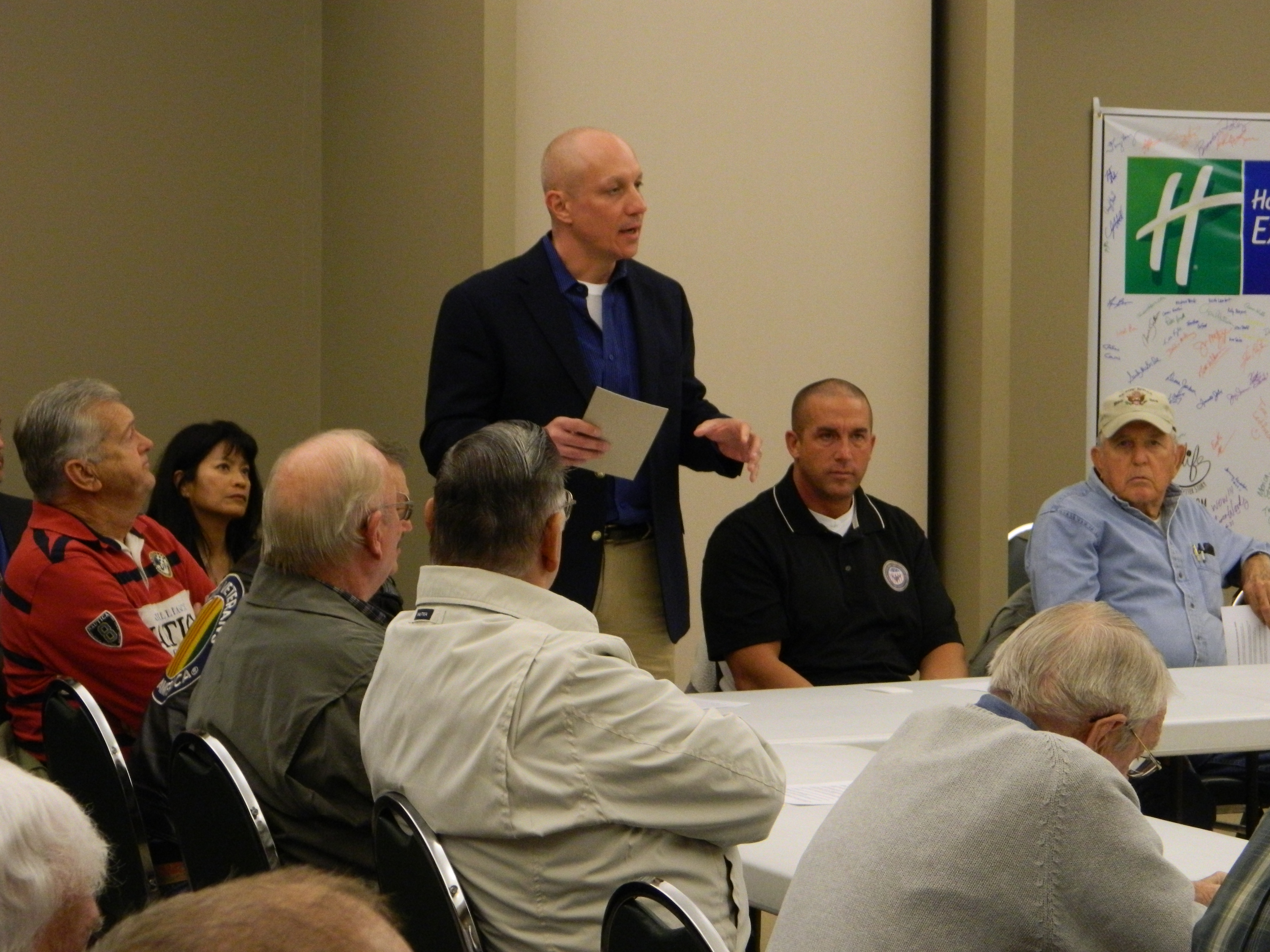CLEVELAND, Tenn. - Fifty people, many of them veterans, engaged in a sometimes heated discussion with state officials this week over concerns about a donated 28-acre South Cleveland site earmarked for the proposed Cleveland/Bradley State Veterans Home.
One result of the meeting of the Southeast Tennessee Veterans Home Council, which included representatives from the Tennessee Department of Veterans Affairs and State of Tennessee Real Estate and Asset Management, is that all parties said they are committed to working more closely to make the veterans home a reality.
"I think this moves our relationship more from one that is contentious to one that is collaborative," said Peter Heimbach, executive director of building commission relations for the real estate and asset management organization.
A key part of that change is the creation of a five-member liaison group from the veterans home panel, which was established to improve communications involving the project's governmental processes.
Several elected officials and veterans home council members expressed dismay about the recent state recommendation that the proposed Westland Drive site for the 108-bed veterans facility was "unacceptable." Some $80,000 has been spent on preparation and environmental studies there since a site visit by state officials 18 months ago.
"We've got access to the interstate, we've got access to the highway, we're within four minutes of the hospital. It's picture perfect," said Bradley County Commissioner Mark Hall, co-chairman of the veterans panel.
Challenges to the location include narrow proportions, slopes, unconsolidated fill within the facility's footprint and visibility from the road, according to a real estate and asset management review that was sent to state Veterans Affairs personnel on Nov. 5.
Individually, none of those problems is insurmountable, but collectively they cannot be easily overcome, Heimbach said. The most significant factor is the narrow shape of the site, which compounds all the other problems, he said.
If local officials had known that the site was too narrow beforehand, solutions could have been sought earlier, said Gary Farlow, president and CEO of the Cleveland/Bradley Chamber of Commerce.
The veterans panel asked if the purchase of more land on the site's southern boundary would resolve the problem.
Heimbach said that was worth consideration, and he said he would bring the matter before the architect involved in assessing the property's suitability.
Paul Leach is based in Cleveland. Email him at paul.leach.press@gmail.com.

